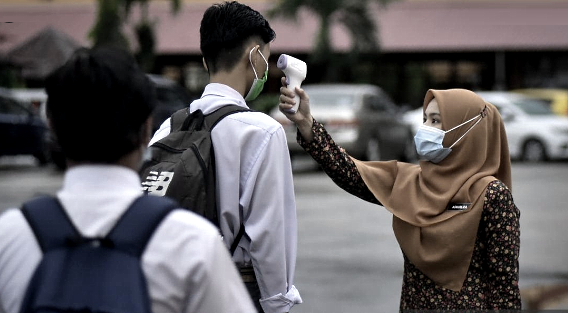Sin Chew Daily
Following the rollout of the national immunization program and a marked downtrend in daily new infection numbers, we seem to have spotted the light at the end of the tunnel. But this is not reason enough for us to drop our guard. This whole pandemic thing is still very much evident and exacting!
Secondary schools in the country will start their classes from April 5 and 6. With many secondary school students soon going back to school to resume their classes, will their schools be adequately prepared to take on the challenges of fighting the coronavirus? And will these students dutifully adhere to all the SOPs?
Primary school students started school earlier this month, and following news of confirmed infections from students and teachers, many parents have grown wary.
New infection clusters will emerge if some of the secondary school students fail to comply with the SOPs, or their schools are lax in enforcing them, once they go back to school in droves.
Health DG Dr Noor Hisham Abdullah has said there were 41 new education-related infection clusters in the country between January 1 and March 25, with a total of 2,228 reported cases, including 1,058 from tertiary institutions, 631 from secondary schools, 419 from preschool and primary schools, and 120 from others. This shows that there is a certain degree of infection risk for students to go back to school, and the authorities must be prepared for this.
As senior minister (education) Mohd Radzi Md Jidin has said, the government had adequately assessed the risks before allowing students to go back to school. We hope that the authorities will monitor the situation closely to ensure the safety of students as well as teachers.

In the meantime, Hari Raya will fall in the coming May and the government is still studying whether to allow Malaysians to travel interstate for the festivity, pending the situation of the pandemic in various states.
Indeed, many people hope to travel back to their hometowns to celebrate the festive season, while the travel industry hopes the lifting of travel ban will inject a new lease of life into the struggling industry.
Interstate travel does have its risk and could even pop up the infection curve. It is therefore imperative that the government carefully evaluate the risks and make a wise decision.
Malaysians must constantly prepare themselves and adhere to the SOPs in order to minimize the infection risks, whether the government eventually lifts the travel ban or not.
Worryingly, many people have begun to drop their guard. In Kelantan recently, a family and their neighbors were infected after attending a birthday party. This shows that the virus is omnipresent and is ready to attack the moment we drop our guard.
As a matter of fact, the outbreak in this country is still serious. We still report over a thousand new cases each day, and must therefore remain highly alert.
Meanwhile, the government must also be resolved to lead by example without double standards. Sadly, deputy federal territories minister Edmund Santhara was allowed to go on home quarantine upon his return from New Zealand. Although DG Noor Hisham has explained that the deputy minister's house was good enough for quarantine, considering the fact New Zealand is a low-risk country.
Unfortunately such argument is hardly convincing. Does it mean that Malaysians returning from low-risk countries will be put on home quarantine so long as their houses are suitable for this purpose?
The road ahead is still full of challenges especially with large crowds of secondary school students going back to school very soon. Both the authorities and the people must continue to remain highly focused in battling the virus until the war is won.
ADVERTISEMENT
ADVERTISEMENT


































